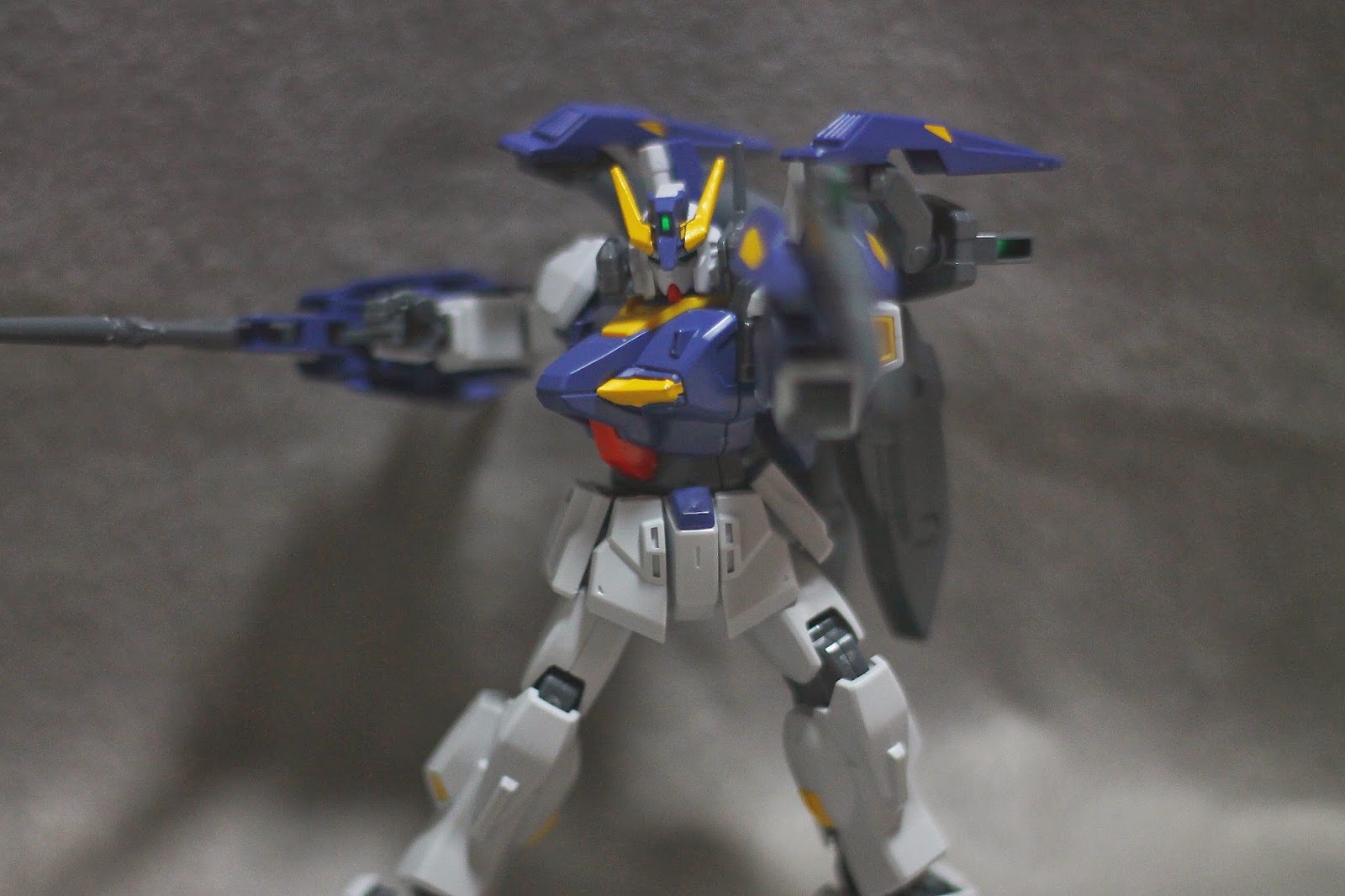 |
| Work it! |
Photography is subjective. Some people like ultra-tight, super-macro shots, while others prefer brooding panoramic landscapes that capture every vivid detail. Personally, I like close-ups, as it adds an element of size and realism to a tiny kit, allowing it to be larger than life for that moment when it is in the confines of a digital picture.
The following is not a exhaustive guide, it is merely an overview of the set-up I use at home to achieve most of the shots you see on this blog. I primarily snap photos with my Samsung Galaxy S4 Active (8 megapixel camera) or with my sister's iPhone 5S, which has a better focusing feature that is able to produce DSLR-esque photographs. If I'm feeling particularly diligent that day, I will break out my Nikon 3100 entry-level DSLR, just to obtain those sweet depth-of-field shots. Any photographer will tell you that it's not the type of camera you are using, but the skill of the photographer. That's true, but a good camera will make your life a hell lot easier.
I'm not going to explain the basics of photography like f-stops, three-point lighting and stuff, you're better off reading from blogs dedicated to photography than one that is dealing with toys. What I am going to do is show you how you can achieve DECENT shots with the simplest of equipment, stuff that you don't have to pay through your nose for.
Capturing the Moment
Tip #1: Find a place with good light.
The most basic element of photography is light, from which the term got its name. Light is an essential element in all of your photographic endeavours and is what separates a good photo from an awesome one. Look around your house and try to find a sweet spot where lighting is perfect, and always use that spot henceforth. Be prepared though, that G-spot might require you to go prone, crouch low or kneel to obtain that one shot.
An alternative is to procure/create your own light box. Essentially a self-contained studio with light sources, reflectors and the works, a light box will allow you to produce shots in a controlled environment. If you need more light, you can adjust the bulbs. If you need to change the background, you can easily do so. The only issue is its relative size and dependency on power, so you'd need to dedicate some real estate in your residence to house the light box.
Tip #2: Have a good background.
Most of our time, in the haste to complete kits and snap pictures of the finished product to show the world, we neglect a fundamental element of basic photography. Having a good background really makes a heck lot of difference as it:
- Reduces background noise so that your subject can be properly perceived.
- Provides a stark contrast from your subject.
- Provides a better lighting situation (of course this varies from place to place).
My set-up at home is, in a word, makeshift. Actually one layer of a self-assembled plastic rack turned upside down with all of its supporting beams combined into two long ones, this is the most effective set-up I've come across so far.
The backdrop itself (a sheet of felt from Daiso) can be swapped for any number of colours, but I stick to grey as it is the most neutral and light friendly.
Following are two photos of the same kit in the same pose with and without a proper background:
Without background
With background:
As evidenced, having a solid background gives a much cleaner feel and polished look to the picture. However, setting up and dismantling the set-up takes time, driving modelers (me) to simply snap my kits where they stand.







Your contents are too straightforward to browse and easy to understand.Heather
ReplyDeleteHi,
ReplyDeleteI like the idea with the "plastic rack turned upside down".
I use a black or with cardboard sheet as a background. That way you don't have wrinkles by accident.
For Awesome Marketing of your brands consider Insta media services high quality coverage.
ReplyDeleteExcellent writing, Always learning a lot form your vital post. Your Blog is The Best Place To learn about Photography Tips and other photography-related stuff.so I always pay a visit here. anyway, thanks a lot for posting for us And Just Wanted to let you know additionally I run the best photoshop E-commerce Product Photo editing service providing website.
ReplyDeleteThis post is worth reading. I always find your blog post informative and enjoyable to read. The tips you've given definitely will work well in photography.
ReplyDeleteBest Regards,
Clipping Path
Hi,
ReplyDeleteExcellent post. You have shared very informative post with us. As a result, many people can get help from this post. You are very creative. Sincerest wishes for your wellbeing.
Lot of regards
background removal service
Lamar G Tech Wearable is best Electronics Retailer
ReplyDeleteNetwork of 50+ stores nationally, housing over 100 brands and 1000 products. From in-depth, expert buying advice to personal after-sales care tailored to each customer, we commit to our promise of ‘Personalizing Technology’ every day.
I like this toys. How did you get this? It looks like tranformers's "Robot"! Thank you for nice photography tips.
ReplyDeleteso nice blog this is....
ReplyDeleteClipping Path Universe
I appreciate your work because i enjoyed reading alot. keep up the good work. Will look forward for more such informative blogs.
ReplyDeleteBest Nikon Lens for Night Photography
This is a great and informative blog.
ReplyDeletePhotography is the art and practice of creating durable images by recording light or other electromagnetic radiation. It can be done electronically using an image sensor or chemically by means of a light-sensitive material such as photographic film
ReplyDelete